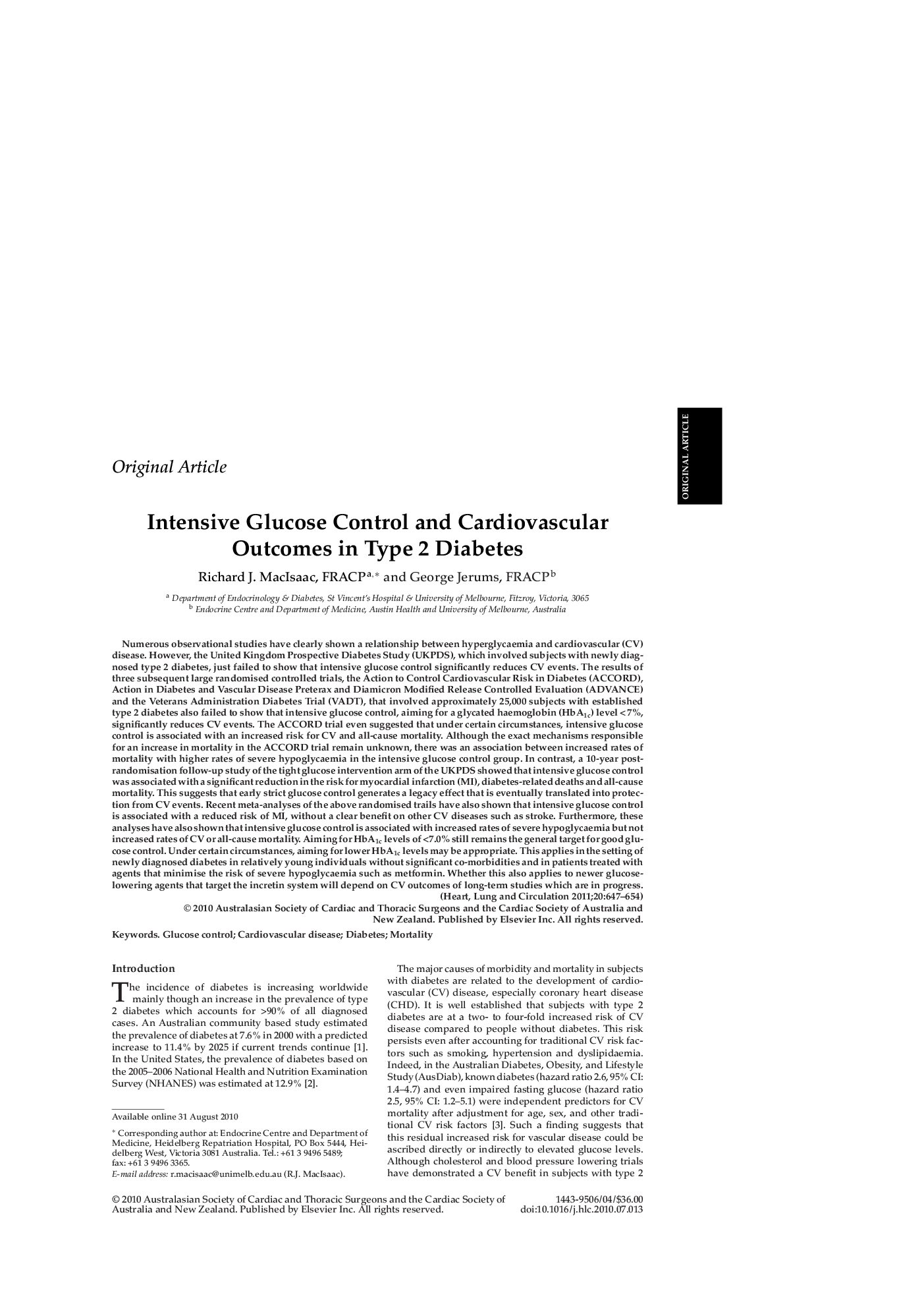| Article ID | Journal | Published Year | Pages | File Type |
|---|---|---|---|---|
| 2919273 | Heart, Lung and Circulation | 2011 | 8 Pages |
Numerous observational studies have clearly shown a relationship between hyperglycaemia and cardiovascular (CV) disease. However, the United Kingdom Prospective Diabetes Study (UKPDS), which involved subjects with newly diagnosed type 2 diabetes, just failed to show that intensive glucose control significantly reduces CV events. The results of three subsequent large randomised controlled trials, the Action to Control Cardiovascular Risk in Diabetes (ACCORD), Action in Diabetes and Vascular Disease Preterax and Diamicron Modified Release Controlled Evaluation (ADVANCE) and the Veterans Administration Diabetes Trial (VADT), that involved approximately 25,000 subjects with established type 2 diabetes also failed to show that intensive glucose control, aiming for a glycated haemoglobin (HbA1c) level < 7%, significantly reduces CV events. The ACCORD trial even suggested that under certain circumstances, intensive glucose control is associated with an increased risk for CV and all-cause mortality. Although the exact mechanisms responsible for an increase in mortality in the ACCORD trial remain unknown, there was an association between increased rates of mortality with higher rates of severe hypoglycaemia in the intensive glucose control group. In contrast, a 10-year post-randomisation follow-up study of the tight glucose intervention arm of the UKPDS showed that intensive glucose control was associated with a significant reduction in the risk for myocardial infarction (MI), diabetes-related deaths and all-cause mortality. This suggests that early strict glucose control generates a legacy effect that is eventually translated into protection from CV events. Recent meta-analyses of the above randomised trails have also shown that intensive glucose control is associated with a reduced risk of MI, without a clear benefit on other CV diseases such as stroke. Furthermore, these analyses have also shown that intensive glucose control is associated with increased rates of severe hypoglycaemia but not increased rates of CV or all-cause mortality. Aiming for HbA1c levels of <7.0% still remains the general target for good glucose control. Under certain circumstances, aiming for lower HbA1c levels may be appropriate. This applies in the setting of newly diagnosed diabetes in relatively young individuals without significant co-morbidities and in patients treated with agents that minimise the risk of severe hypoglycaemia such as metformin. Whether this also applies to newer glucose-lowering agents that target the incretin system will depend on CV outcomes of long-term studies which are in progress.
